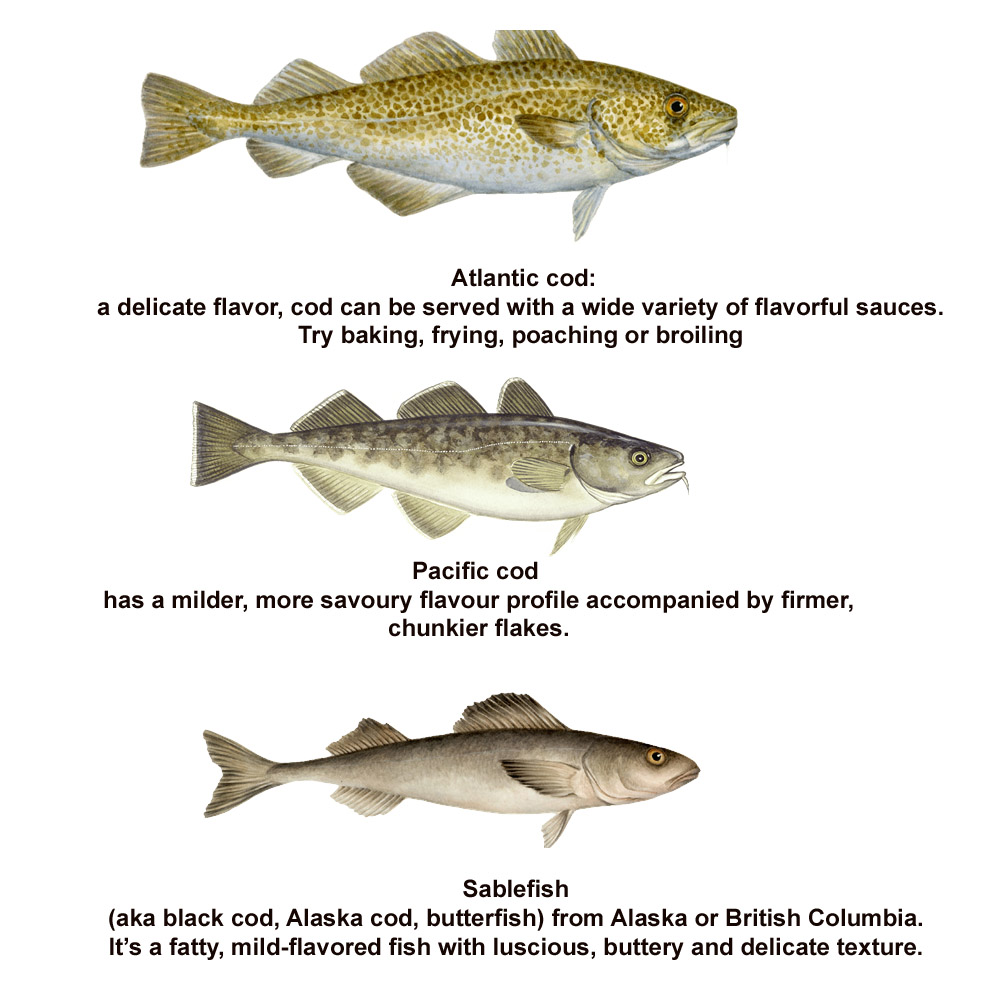
Cod is the king of whitefish, a species over which wars have been fought and trading fortunes made for hundreds of years. Today, cod is as popular as ever. Salt cod remains a staple food in Portugal, Spain, Italy and Brazil, while fresh and frozen cod, is widely consumed throughout North America, Europe and Japan, where its flaky white flesh has an almost universal appeal.
Found throughout the North Pacific and North Atlantic, cod is the world’s second largest whitefish resource after Alaska pollock. In most years, cod landings average between 1.5 million and 2 million metric tons (compared to 3 to 4 million metric tons for Alaska pollock).The cod resource is far larger in the Atlantic, where catches are normally about four times higher than in the Pacific. If the quality is equal, for all practical purposes, the two species are identical from a culinary standpoint.
The Alaska fishery is by far the most important cod fishery in the Pacific. Alaska fishermen catch between 250,000 and 300,000 tons of cod each year, about 60% of which is caught by freezer longliners and the rest by trawlers and pot boats. Factory trawlers produce FAS (frozen-at-sea) fillets, while shore plants in Alaska produce frozen fillets.
Off the West Coast, where Pacific cod is often called “true cod” or “gray cod” or “P-cod,” less than 1,000 tons of cod are caught each year as a bycatch in the trawl fisheries for rockfish and flatfish.
While almost all the West Coast cod catch is marketed as fresh fillets, the Alaska catch is almost always frozen, although some fresh cod fillets are air freighted from Alaska to markets in the "Lower 48", where cod is a favorite fish.
There can be significant quality differences with cod, depending upon the time of the year the fish is caught. In the spring, for example, when cod are feeding heavily on small, oily fish like capelin, their flesh is noticeably softer. Quality is also a function of how the fish was handled. As a rule, the best fresh cod comes from short trips on boats that gut, bleed and ice their fish. The best frozen cod is normally FAS (Frozen At Sea) fillets. Be aware, though, that how a fish was caught and processed is not a guarantee of quality.
Large quantities of imported frozen cod fillets are sold in the U.S. each year. In 1998, for example, more than 30,000 tons of cod fillets were imported, with Iceland the leading supplier followed by Canada, Norway, Russia and China. While most of these imports are single-frozen, increasing volumes of double-frozen fillets are also imported. Except for the case of China, which produces only double-frozen cod since the country has no cod fishery, imported cod fillets can be either single or double frozen. Although they can be very good quality, double-frozen cod fillets sell at a significant discount to single frozen, so relying on country-of-origin alone to distinguish between single and double-frozen product is a mistake. Before the development of freezers, most cod was salted. Even today, the market for salted cod, which is called bacalao, is very large in countries like Brazil, Portugal, Spain and Italy. Traditionally, cod was the fish of choice for fish blocks that are used to make fish sticks and fish sandwiches at fast-food restaurants. As cod prices have increased, however, Alaska pollock has replaced cod in these applications.
A good read: COD by Mark Kurlandsky. The books reveals the importance of this wonderful fish in history that changed the world.
12 recipes selected, Page 1 of 1
12 recipes selected, Page 1 of 1

















